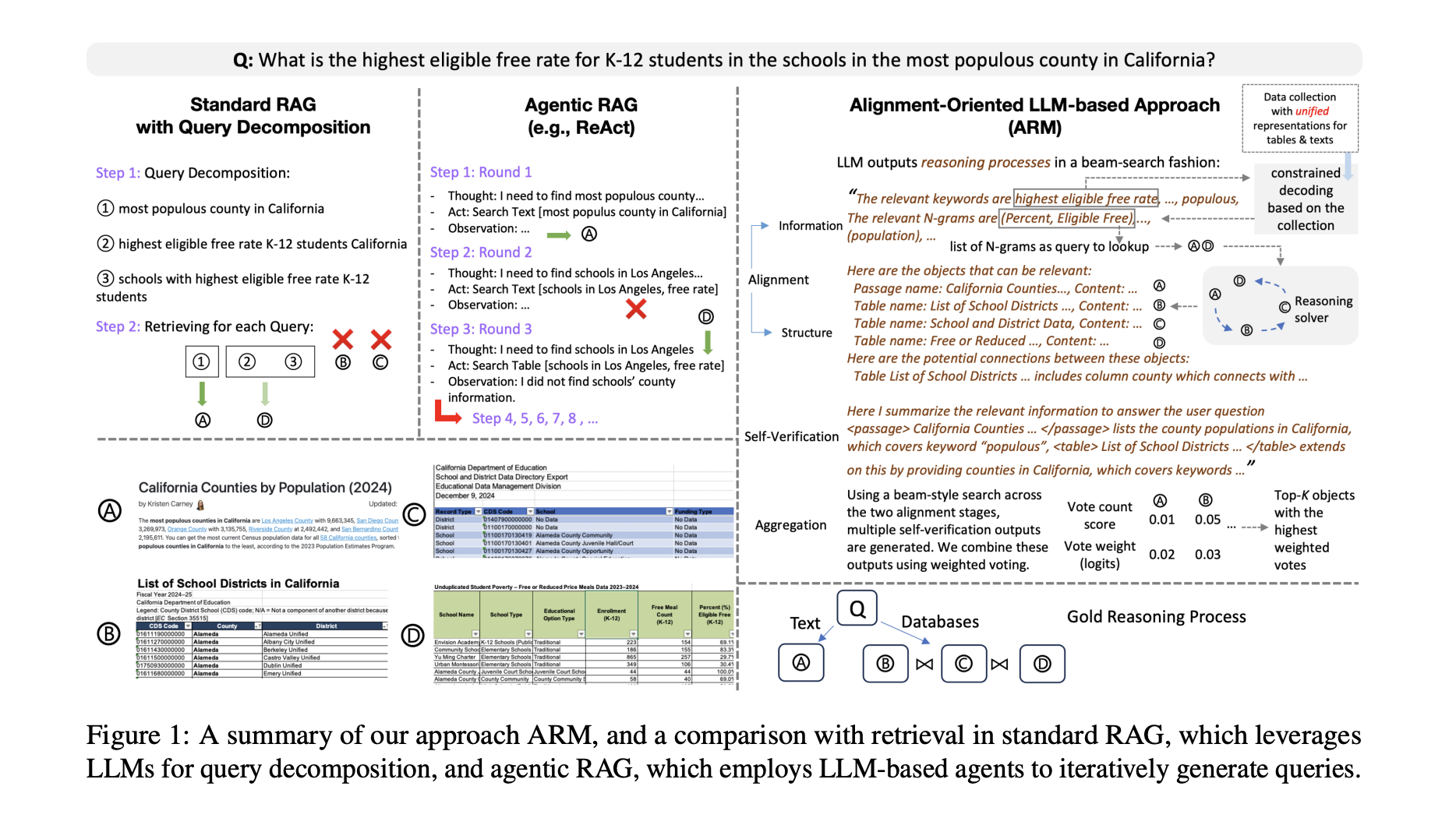
Challenges in Answering Open-Domain Questions
Answering questions from various sources is difficult because information is often spread out across texts, databases, and images. While large language models (LLMs) can simplify complex questions, they often overlook how data is organized, leading to less effective results.
Introducing ARM for Better Retrieval
Researchers from MIT, AWS AI, and the University of Pennsylvania have developed ARM, an advanced LLM-based retrieval method. ARM is designed to improve complex question answering by aligning queries with the structure of available data. Unlike traditional methods, ARM focuses on the relationships between data objects, allowing for a more efficient retrieval process.
Key Benefits of ARM
- Improved Accuracy: ARM outperformed standard methods, achieving significantly higher accuracy in retrieving relevant information.
- Efficient Retrieval: ARM streamlines the retrieval process through structured reasoning and alignment verification.
- Dynamic Integration: The framework allows for real-time retrieval and reasoning, enhancing the overall efficiency of the process.
How ARM Works
ARM integrates retrieval and reasoning into a single process, optimizing it through a method called beam search. This approach allows the LLM to dynamically access relevant data while ensuring logical consistency and accurate retrieval.
Components of ARM
- Information Alignment: Extracts key terms to find relevant data objects.
- Structure Alignment: Refines the selection of data objects for coherence.
- Self-Verification: Validates and integrates chosen objects to ensure accuracy.
Enhanced Retrieval Techniques
Textual data is indexed to improve accuracy, allowing for precise alignment during retrieval. The process generates multiple drafts and prioritizes the best options, ensuring high-quality responses from a variety of sources.
Proven Results
ARM was tested on open-domain question-answering tasks and showed superior results compared to traditional methods. It efficiently retrieves relevant objects, reduces the number of LLM calls, and improves overall performance.
Conclusion
Effective open-domain question answering requires a clear understanding of data organization. ARM addresses the limitations of traditional methods by efficiently identifying and navigating relevant data objects. The experimental results demonstrate ARM’s advantages in accuracy and efficiency.
Explore More
Check out the Paper. All credit goes to the researchers involved in this project. Follow us on Twitter, join our Telegram Channel, and connect with our LinkedIn Group. Don’t forget to join our 75k+ ML SubReddit.
Transform Your Business with AI
Stay competitive by leveraging ARM for enhanced question answering. Here’s how:
- Identify Automation Opportunities: Find key customer interactions that can benefit from AI.
- Define KPIs: Ensure measurable impacts on your business outcomes.
- Select an AI Solution: Choose tools that fit your needs and allow for customization.
- Implement Gradually: Start with a pilot project, gather data, and expand usage wisely.
For AI KPI management advice, contact us at hello@itinai.com. For continuous insights, follow us on Telegram or @itinaicom.
Revolutionize Your Sales and Customer Engagement
Discover solutions at itinai.com.



























